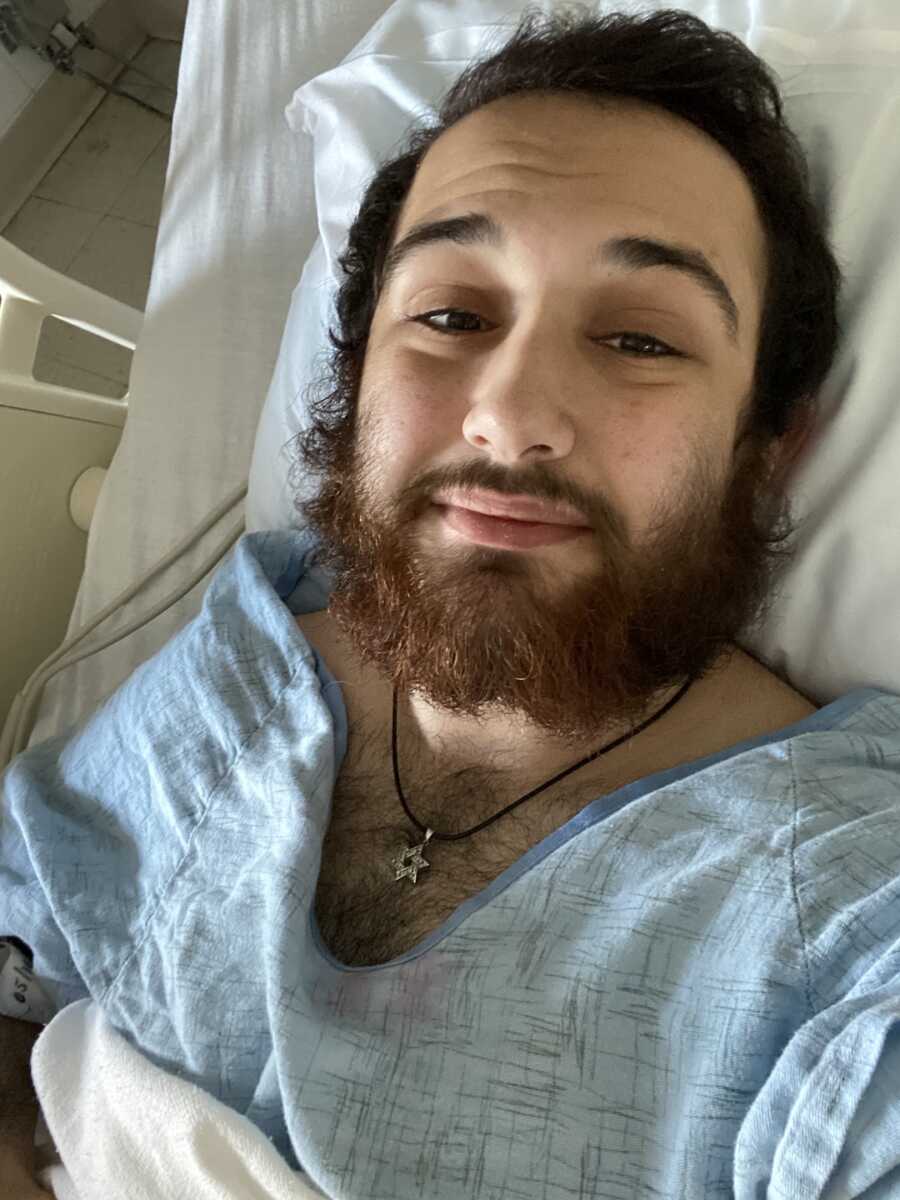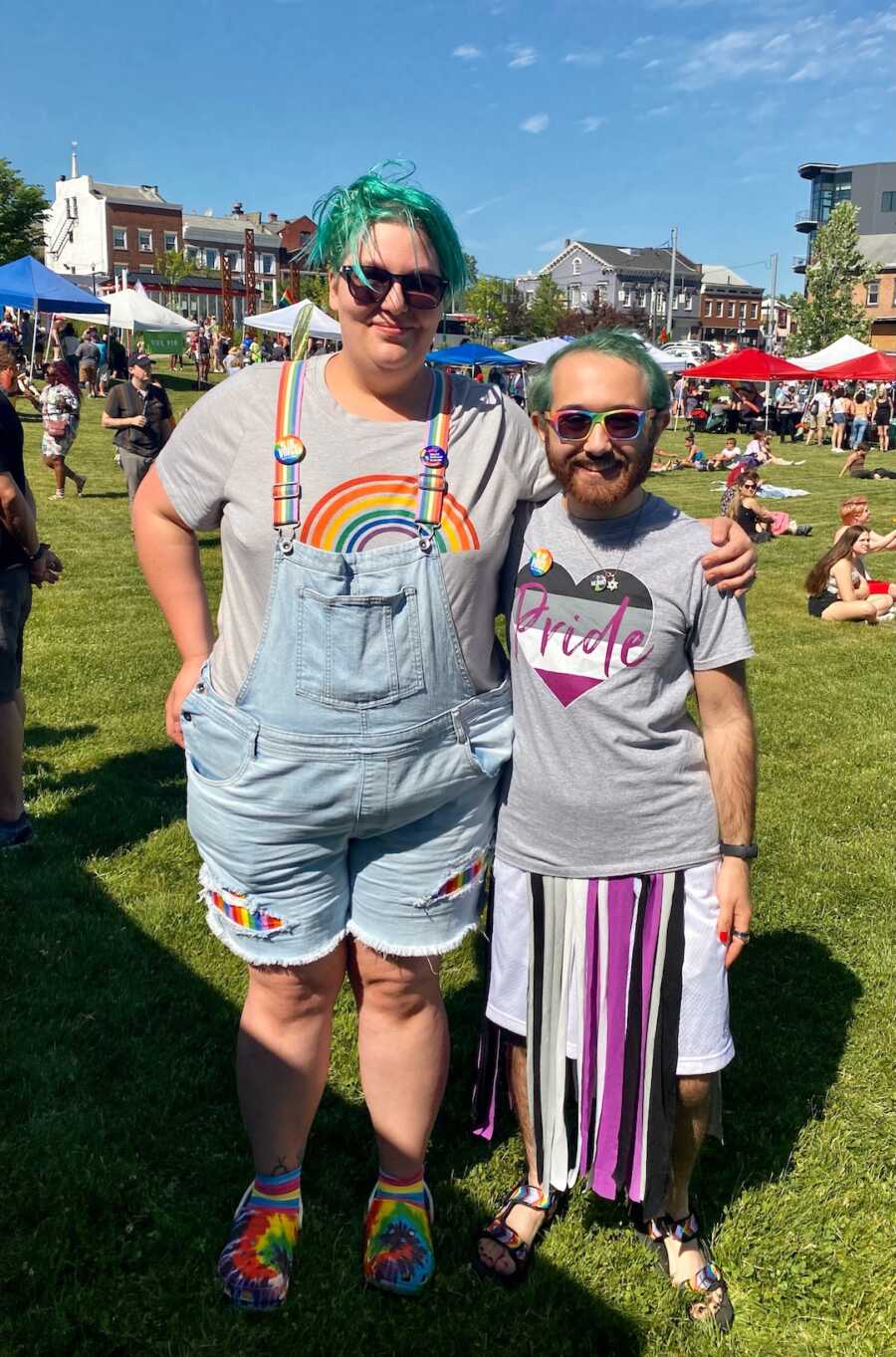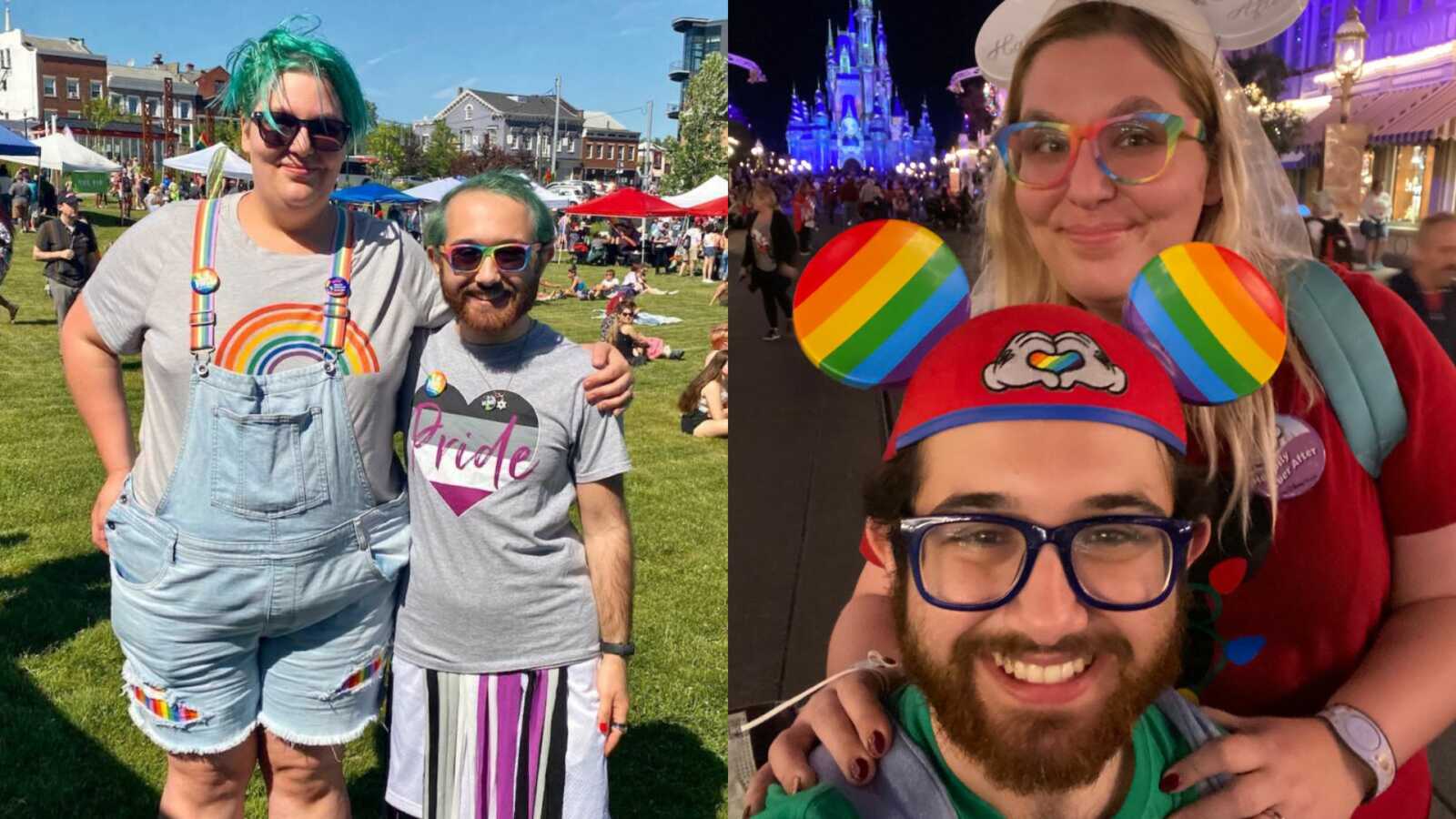Happy Pride Month to all LGBTQIA+ readers, as well as the allies who celebrate alongside queer friends and family. LGBTQIA+ activism and pride are year-long, but this month of June provides such an excellent opportunity to reflect on where we came from, where we are, and where we want to be. There are so many different groups of people within the queer community, and this is where the impact of intersectionality comes into play. Intersectionality relates to how different aspects of one’s identity impact each other, and influence people’s experiences.
For a while, I only really thought about the intersection between my queer and Jewish identities, such as how there is a lot of antisemitism that comes from parts of the LGBTQIA+ community and also a lot of queerphobia that comes from parts of the Jewish community. But at the same time, I also was able to go on a trip that was specifically for queer Jewish people, and it was the best trip of my life! It really helped me embrace both of these identities individually but also combined.
Aside from being Jewish though, I am autistic and chronically mentally/physically ill, and it was only this year that I began to realize how these parts of who I am impact my experience of LGBTQIA+ pride.
1. People always say to “be yourself” but often, we may be unconscious as to what is preventing us from actually being ourselves.
“Be yourself” is always something I thought I adhered to growing up. But in hindsight, I realize that although I was not giving in to peer pressure, making sure I dressed like other kids, or pretending to like things I did not, I was unknowingly masking who I was. Masking is a term that refers to people (many times unintentionally) disguising natural personality traits in order to adjust to social situations or due to harassment and abuse. Although I only learned about masking through the autistic community, that is not my only experience with masking; it was actually thanks to unmasking my gender and sexual orientation that I was able to unmask as an autistic person.
Masking can be extremely harmful to one’s health, both physically and mentally. I dealt with social phobia and avoidance as well as outbursts at home. Despite treatment for mental illnesses such as Obsessive Compulsive Disorder (OCD), anxiety, and depression, these issues persisted through college when I began to explore my sexuality following some major signs in my first relationship that I was not straight.
Realizing I was not straight is what introduced me to my college’s gender and sexuality alliance (GSA), which helped me explore my queer identity even further, and my increased confidence as I removed one mask after the other helped me flourish through college and grad school. I no longer avoided social relationships and found a great group of friends including my now spouse. This is where people began to recognize my autistic traits, such as in how I talk and the intensity to which I talk about certain special interests, my aversion to eye contact and physical contact, as well as my repetitive behaviors. These clearly were present during childhood, as shown by my early diagnosis of OCD (which is very prevalent within the autistic community), but I had masked to where I was never evaluated and diagnosed until I was 25.

2. You don’t owe anyone justifications about your identity. You know who you are.
Although many queer people deal with mental illness, being queer is not due to mental illness. Many times mental illness can be worsened by constantly being questioned and facing harassment, discrimination, and threats for who you are.
About a year after I realized I was queer, I was ready to take steps to be seen by others as the person I knew I was. My excitement and determination were not shared by some loved ones, who were unwilling to accept that I was part of the LGBTQIA+ community. Aside from emotional and psychological abuse, a justification I was given to stop me from taking the steps I knew I had to take was that I “have so much going on” in relation to my experience with mental illness. I had some worsening symptoms, as well as new conditions, emerge, such as depression. I was sent to a new therapist, as well as a psychiatrist, who adjusted my meds.
These loved ones could not see that the barriers to expressing my true self were a major cause of this disruption to my mental health, and medication changes would not erase that fact. Luckily, my new therapist was super affirming, and she, as well as peers at a local pride center for youth and members of my college GSA, supported me in pursuing this important goal of mine. And as soon as I became comfortable in my body, my mental health significantly improved. Eventually, the people who once expressed the most disapproval began to see how much better I was doing, and I received genuine apologies from them. Some of these people are my biggest supporters today. Still, though, it is way too frequent that I hear people questioning my peers about their gender or sexual orientation based on mental, cognitive, and physical disabilities.

3. The media often focuses on pride marches, festivals, and gay bars as the center of pride month, but there are so many ways to celebrate!
Especially when I lived an easy train ride to NYC, I used to get upset when I was unable to attend a pride parade or festival, thinking about all that I would be missing and that somehow not attending meant I would not be able to celebrate pride. I often am able to enjoy local pride events, but even smaller ones can be emotionally and physically draining. Chronic illness, disabilities, lack of transportation, and financial issues are all factors that can prevent someone from being able to attend these events. As I began to connect with others who are both queer and chronically ill/disabled, I realized how you can choose how, when, and where you honor and celebrate pride month.
Some of my favorite ways to celebrate Pride (year long!) are with pride movie nights and reading queer literature, both of which can be enjoyed solo or with friends and family. Thanks to apps such as Netflix Party, you can even host virtual movie nights. Many streaming services even have a category of queer movies so you can easily choose from a selection of films! Reading apps such as “Goodreads” also have LGBTQIA+ groups where members read and discuss a chosen book each month. And for people who enjoy music, you can create your own pride playlist (mine mainly consists of showtunes that are either directly queer or that have messages that relate to my personal experiences).

4. It is 100% valid to be upset or frustrated over how your chronic illness/disability tries to control how you celebrate pride.
I never was a big drinker. I had gotten drunk a few times, but only ever drank socially and always had a hard time even finding drinks I liked. In May 2021, I was able to have a great night out at Stonewall Inn in NYC, the site of a turning point in LGBTQIA+ history. I felt so free and alive being in this setting, having drinks, and enjoying the piano bar with a bunch of fellow queers. That next week, though, is when I ended up diagnosed with pancreatitis and was hospitalized for 8 days. Living with pancreatitis, you are restricted to a low-fat, alcohol-free diet. Again, drinking was never a big part of my life, but gay bars were something I only had begun to enjoy in recent years.
In June 2019, I remember being at Waterworks Pub after Capital Pride in Albany, NY—it was so crowded and loud, and I normally would have run right out of there. But I was there with my now wife—whom I realized my love for that day—and everyone was just so happy and expressing their truest selves. I can still go to these bars, but the experience will not be the same, and I do sometimes get sad about that. I am so grateful though for places that allow me to feel that same liveliness and freedom.
5. Although chronically ill and disabled people often are used to ableism and stigma, it can feel worse when coming from a community that is meant to embrace each other and strive for inclusiveness.
As mentioned at the beginning of this article, intersectionality means a lot to me. During pride month, I celebrate myself and other chronically ill and disabled queers, as although we all have unique experiences, we share some common struggles and perspectives. But seeing year after year, organizations not acknowledging that this large part of the LGBTQIA+ community is excluded from pride month festivities can be discouraging. During the first two summers of the pandemic, there was a rise in virtual pride events that hopefully will continue for years to come. But for in-person pride events, more can take steps such as ensuring accessible seating, having sensory-friendly areas/quiet spaces, accounting for dietary restrictions/food allergies, and having ASL interpreters for speeches/performances and text to speech support.
This past year has really been a learning experience as I navigate chronic physical illnesses that I finally have been addressing. This, along with the validation of an autism diagnosis after a few years of knowing I was autistic, allowed me to further understand who I am. Pride month for me does not just mean celebrating my queer identity, but how all of my identities intersect with one another. I am queer, Jewish, autistic, and mentally/physically chronically ill, and they all play a role in who I am. I am so glad that through the years I was able to discover, connect, and embrace myself as a whole, as I love the person I am today. This June is pride month, and there are so many ways to celebrate, so as the wonderful musical Kinky Boots states, “Let pride be your guide.” And that message applies year long.
Pride Our Way is a global two-day virtual Pride event for the disabled and chronically ill community. Monroe encourages readers to check out this event as part of their Pride Month celebrations. Find more details at this link.

This story was submitted to Love What Matters by Monroe, MPH (He/Him) of Capital Region of NY. You can follow his journey on his personal Instagram and his health journey Instagram. Submit your own story here.
Read more stories like this:
Do you know someone who could benefit from this story? SHARE this story on Facebook to let others know a community of support is available.




